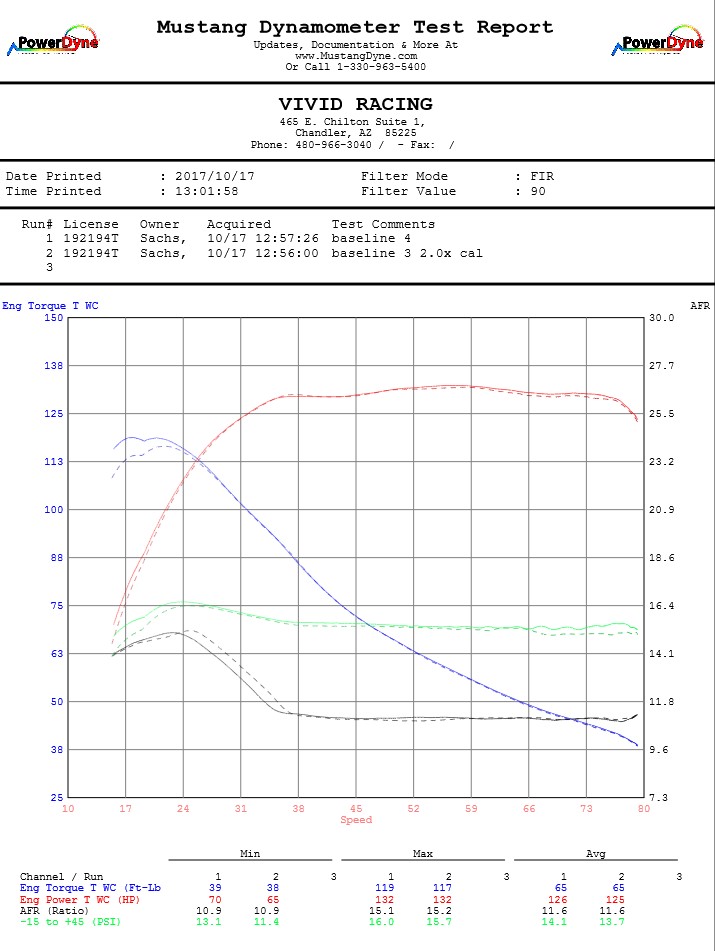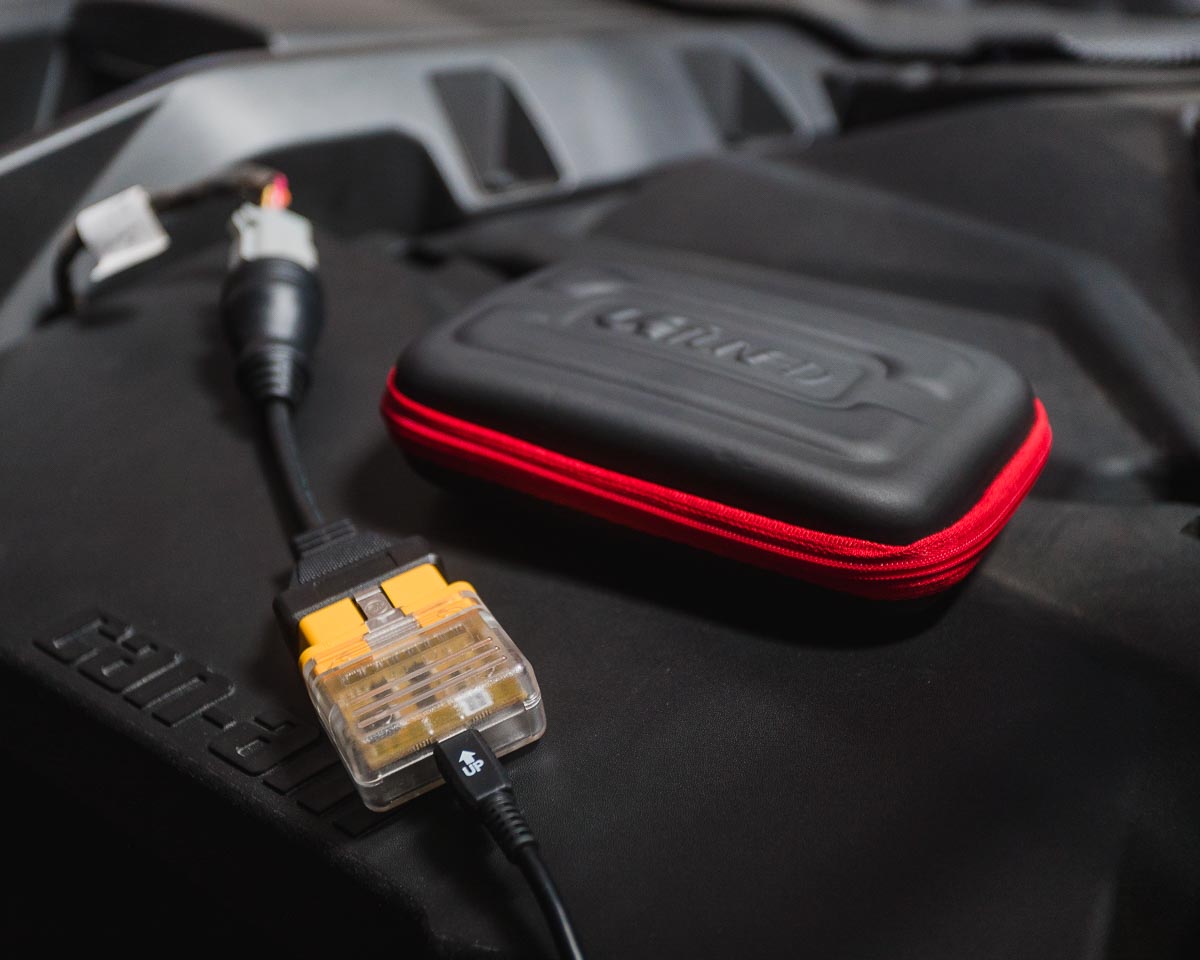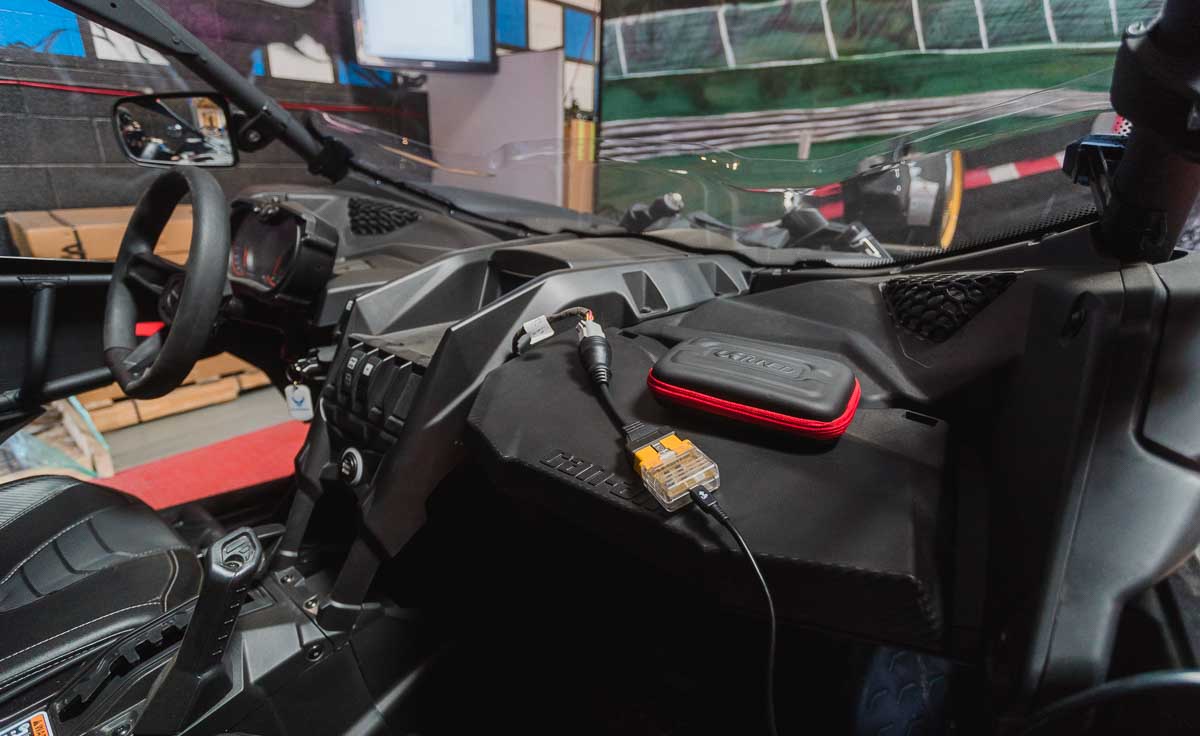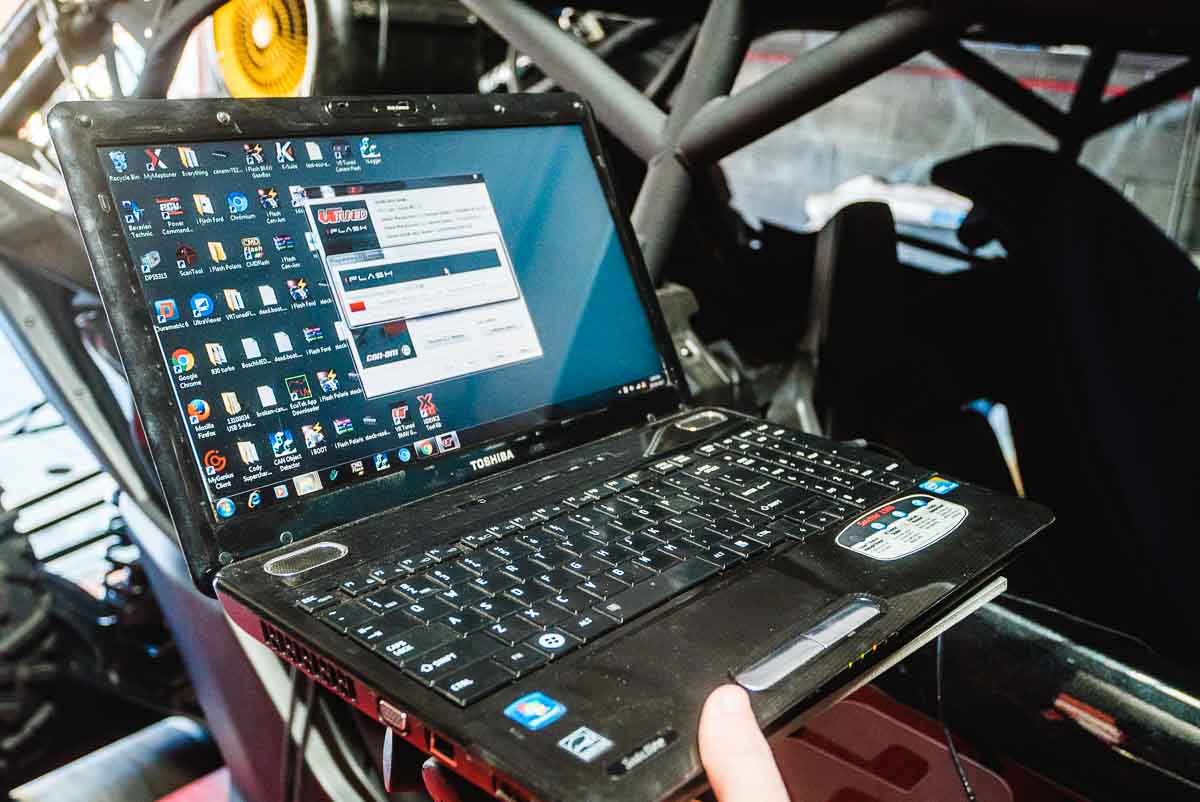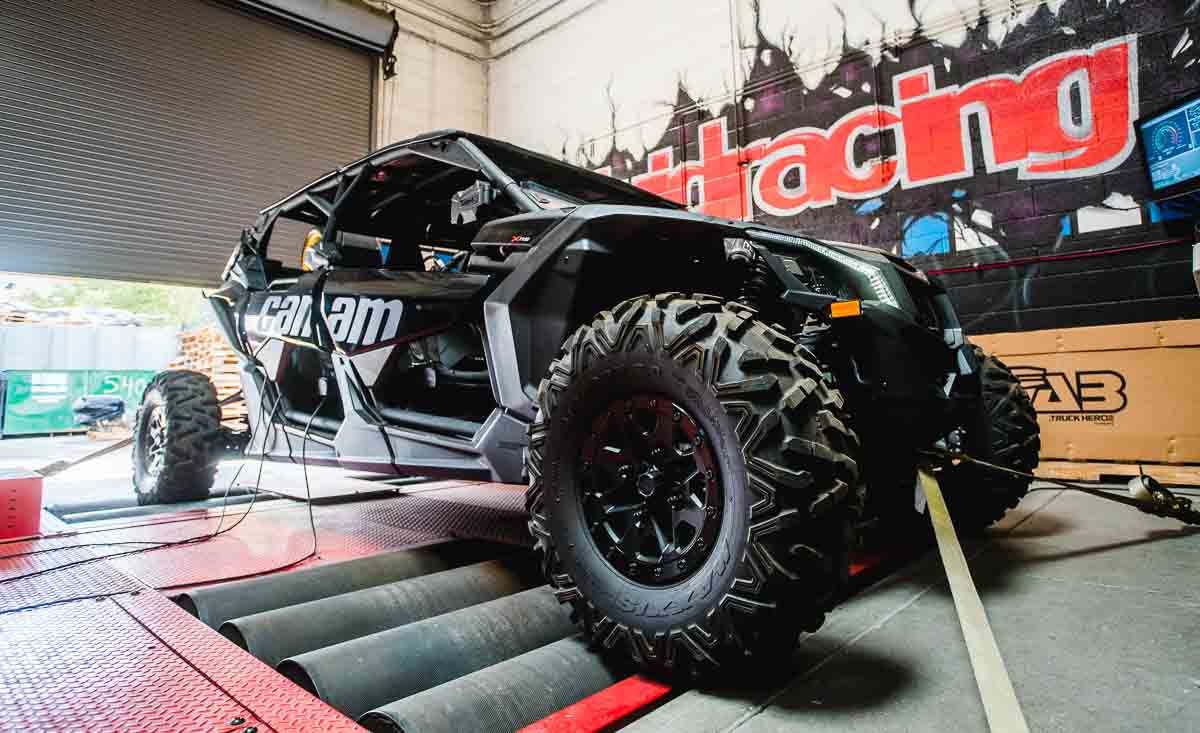The 2018 Can-AM Maverick X3 Turbo can get near 200 horsepower with the addition of an ECU Flash and exhaust system. Coming from the factory with 172bhp, the 2018 is up from 154bhp that was in the 2017. This makes the 2018 Can-Am X3 the fastest UTV on the market. VR Tuned has successfully tuned the 2017 Can-AM X3 as seen in our previous articles here. Beating out the competition with performance as well as convenience in flashing with our OBDII Diagnostic port tool (watch here). With the changes in horsepower and parts to the 2018, we wanted to provide yet again, the best ECU flash for the X3’s latest model.
So what is different in the 2018 versus the 2017? The basic changes in the 2018 are a different intercooler, larger fuel pump, and an upgraded ECU flash. When comparing the file changes between a tuned 2017 and the stock 2018 X3, it seems like BRP did what all tuners were doing to get more power. The calibrations were very close which in layman’s terms means the 2018 X3 is just a tuned 2017 X3! However, with the upgraded hard parts, this still allows for more room to gain power on the 2018 Can-Am X3. Even for those that buy the 2017 upgrade power kit from a Can-Am dealer, you can do the 2018 ECU flash. Both year models do use the same Bosch ME17.8.5 Rotax ECU however the software is totally different and not interchangeable. Basically a 2017 flash or stock file will not work on a 2018.
So what did we test? Our test vehicle was a completely stock 2018 Can-Am X3 RS Turbo. We ran the vehicle on our Mustang AWD Dyno here in Gilbert, Arizona. The car was filled with 91 octane pump fuel and our ambient room temperature was around 85F. The CVT transmission has been consistently reading about a 25-30% drivetrain loss on most all Can-Am and Polaris vehicles we test (see here). With the vehicle strapped down, we did several baseline runs logging the vehicles air fuel ratio and boost levels. Our tests start and stop by MPH which runs from 12mph to 80mph. Our baseline tests were consistent at 132 rear wheel horsepower. Take 172 x .75 and you get your estimated rear wheel horsepower number. The boost levels had an initial spike to 16psi but were mainly running at 14psi or just under 1.0bar with an AFR of around 11.6.
Doing the performance calibration for the 2018 Can-Am X3 requires a lot of dyno runs, logging, and testing to get the optimal performance. Our first goal was to get a good upgrade on the stock vehicle. When it comes to AFR, turbocharged vehicles always come in lean like the graph shows but then level out. Our target is about 12.0-12.5 AFR as measured from the tail pipe with our Innovate wideband O2 system. Boost was increased almost 2psi across the curve as well from about 14.0 to about 16.0psi. During testing we tried to increase boost pressure higher with a Plus 10 and Plus 20 percent file on the boost with no changes happening. Thinking that the stock cat pipe or exhaust was restricting the boost pressure, we put on a temporary straight dump pipe off the turbo (watch video below). Continued testing realized no change in boost pressure, yet a small increase in power. The increase in power is because like all turbocharged vehicles, they need NO back pressure. However without a muffler system they can get loud! Turbos like no restriction and to just dump out of the exhaust housing. This allows the turbo to breathe the best and extract its exhaust flow the fastest.
What we did find out is the boost pressure would not increase because the factory wastegate will start to crack open. So the ECU tune is requesting 17psi but the wastegate wont allow it. “Can the vehicle be run at 17 or 18 psi?” Yes with higher octane race fuel. “If the wastegate is opening and not holding the higher boost pressure, how can you fix that?” Similar to our past experience with Porsche turbo cars, you can adjust the stock wastegate rod to tighten the wastegate down. 1 or 2 turns can help keep the wastegate from fluttering open. The best way to tell where your wastegate is opening up is using a hand pump that measures the crack pressure. This will allow you to see what the wastegate rod adjustment will do. Note that this is not required but for those that want to run more boost can and the ECU will adjust for fuel and timing. We don’t recommend going over 18psi without full race gas. In addition to the performance tuning, other features such as an increased rev limiter, speed limiter raised, torque limiters removed, fan temperature lowered, and quicker electronic throttle response are all added.
With our testing complete, you can see that the VR Tuned flash added a very strong 12 rear wheel horsepower at the peak and kept this gain throughout the entire power curve. With the straight dump pipe for testing, gains where near 16 rear wheel horsepower at the peak with an average gain of 14 rwhp. This puts our crank horsepower at 195bhp which is a 23bhp gain over stock on 91 octane! Take that competitors 
- Stock 172bhp
- Tuned 190bhp
- Tuned with Exhaust 195bhp
Check out the dyno sheet, flashing photos, and our full video review. If you are interested in ordering, call us at 1.480.966.3040 or email utv@vividracing.com. Remember with our OBDII flashing cable, we can flash cars anywhere in the world!
Order Online Here
Stock Dyno Runs
Tuned Dyno Runs with and without Exhaust
Order Online Here
Flashing the ECU
On the Dyno



